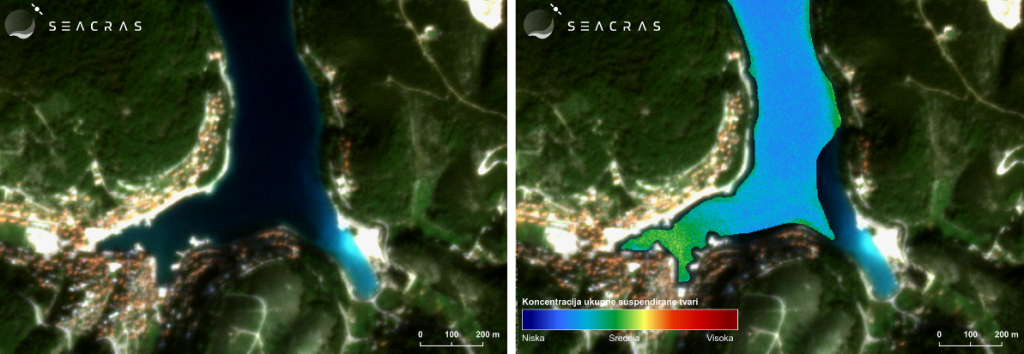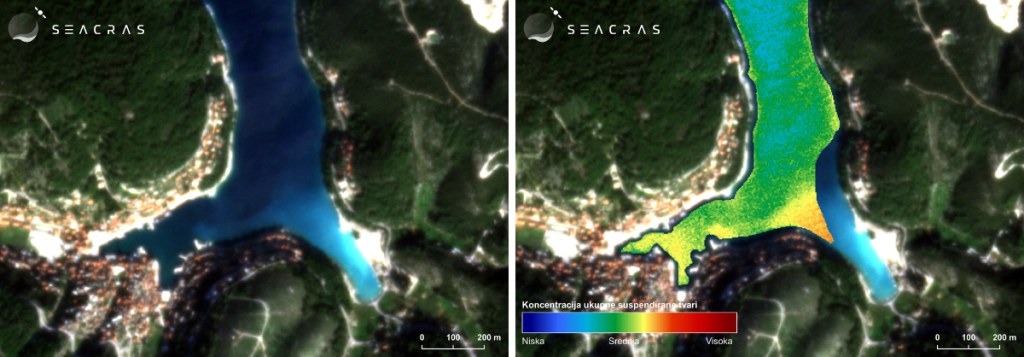Discussions about protecting the environment and preserving natural resources as well as warnings about the growing soil, air, and marine pollution, along with environmental degradation, is becoming an increasingly prominent topic in public discourse.
These initiatives, debates, and educational efforts are vital as they remind us of our responsibility to future generations. Through collective efforts, innovation, and sustainable practices, we can lay the foundation for a healthier and cleaner environment.
On December 15, 2024, an article highlighted the ongoing devastation of the marine environment in Pučišća on the island of Brač.
It’s expected that a quarry located near the coastline would have some impact on the seabed and water column. However, several questions remain:
1) Can we accurately assess the extent of this impact?
2) Can we provide quantitative evidence to support the term “ecocide”?
3) Moreover, is the damage localized, or does its influence extend far beyond?
Even a quick glance at Google Maps reveals that the shallow waters near the shore are covered in fine sediments originating from the quarry. Yet, beneath the surface lies a wealth of details that the naked eye cannot detect.
We conducted a study using our AI-powered analysis of high-resolution satellite data to examine the quarry’s impact on the marine water column. Some results are presented in images 1) and 2).

Image 1) Satellite image of the Pučišća area on the island of Brač (left) and a thematic map showing the quantitative measurement of suspended matter concentration in the water column using SeaCras AI algorithms, dated November 8, 2024 (right).
Image 1) shows a scenario of relatively calm weather with no wind.

Image 2) Satellite image of the Pučišća area on the island of Brač (left) and a thematic map showing the quantitative measurement of suspended matter concentration in the water column using SeaCras AI algorithms, dated November 15, 2024 (right).
Image 2) depicts conditions under the influence of strong bora wind, blowing from the northeast (NE), across the wider area of the island Brač.
The true scope of the problem becomes evident in image 2). The results from our AI analysis quantitatively demonstrate a dramatic increase in suspended matter concentration in the water column. The measured concentration of suspended matter in the middle of the bay (image 2)) is five times higher than that observed in image 1), on dates where there is no wind. Furthermore, near the southern shore, this increase exceeds tenfold.
Additionally, the zone of impact is quantifiable and encompasses the entire bay, revealing a much broader area of influence than what local residents might observe!
The root cause of this issue, which likely occurs periodically, is the strong bora wind carrying material from the quarry located on the northeastern side of the island. The bora spreads this material across a wider area, with a significant portion ending up in the sea, covering the entire bay with substantial deposits.
This natural phenomenon of marine pollution is further exacerbated by urbanization, which often results in larger amounts of inadequately managed construction and industrial waste. This compromises seawater quality and disrupts the natural balance of the marine ecosystem. Our solutions for detecting and monitoring marine turbidity leverage advanced satellite technology and data analytics to precisely track the impacts of such events. This enables timely access to critical information necessary for implementing environmental conservation measures and sustainable coastal management.
Over the years, the cumulative effect has been devastating to the marine environment, as deposits ‘smother’ the seabed and degrade its habitat. While physicochemical indicators of seawater quality periodically point to poor conditions, microbiological quality remains unaffected by these influences.
Using our technology, we addressed all the aforementioned questions and concluded that this represents a form of slow ecocide. However, it is also crucial to recognize that traditional environmental and impact assessments, while based on textbook knowledge, often fail to anticipate unexpected scenarios, particularly in the context of climate change.
Effectively addressing the devastation of marine ecosystems, the impacts of human activities, climate change, pollution, and the degradation of the biosphere on a broader scale requires a comprehensive and strategic approach. Key components of such an approach include continuous monitoring, trend analysis, and the prediction of future scenarios, all grounded in the use of advanced technologies like environmental digital twins. These tools enable precise tracking, comparison, and modeling of future impacts, providing a solid foundation for sustainable and effective decision-making.